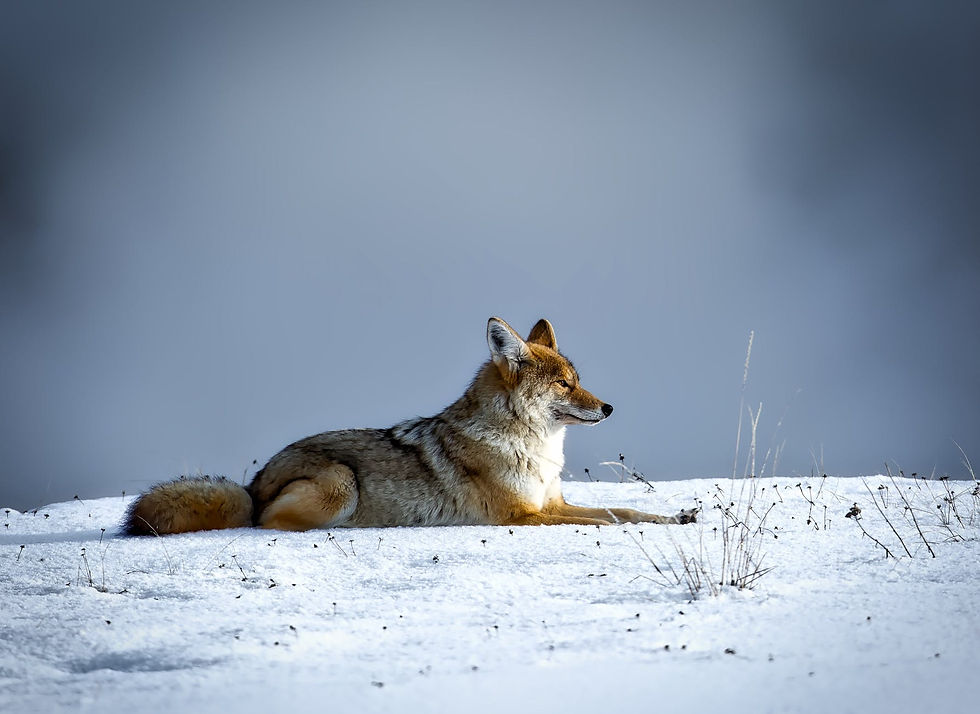War on fur-jackets
- Marie

- 7 mars 2018
- 4 min de lecture

Last week, a Siberian/polar/arctic wind (pick the word that was chosen by your favourite weather forecast) blew over Europe, bringing temperatures down to minus values that had not been seen for a long time. French news also got extatic by the concept of "apparent temperatures" (when the cold wind and air dryness give you the impression that it is colder than what it actually is), and as snow fell down over the country, people were witnessed skiing on the streets of Montpellier.
With winter comes the parade of winter jackets; as I explained in a previous article, I gladly took my old one from the closet it was sleeping in: it was my last resort to managing the cold and I had set 0 degree as the last psychological threshold. The thing that I had not expected from Switzerland or France however was the multiplication of fur-looking jackets and hats. Along with these clothing items, some other colourful fur-looking pompoms can be found as keyrings or handbag decorations in most retails around.

Fur has always been one of the warmest ways for humans to cope with cold weather; however we cannot deny the level of progress the retail industry has experienced in terms of researching and developing animal-and-cruelty-free alternatives, and there has been a good number of campaigns showing the terrible conditions animals suffer before being killed for our fashion needs. I remember for instance specific campaigns in France some years ago against high-fashion brands that were actually using cat and dog fur for their collections, and blurring communications and information by using the species' latin names. I am sure you have also seen some highly-visible protests from PETA during catwalks or fashion shows using signs and bloods. In Zug Bahnhof, I have also seen an association approaching fur-wearing people with flyers.
As much as I want to remain critical about such associations and actions (I always feel a story has 2 sides), I have taken the time to look at the latest news and scandals regarding some famous brands.
The Canada Goose paradox
Note: the images and videos from the links can be disturbing and show animal cruelty
Pic/ Canada Goose

The latest one I have heard of covers the production chain of Canada Goose, brand which is extremely fashionable at the moment in Zug and in Paris. Most winter jackets are filled with geese down feathers and the hood covered with coyote fur. PETA (standing for People for the Ethical Treatment of Animals) has launched an aggressive campaign against the brand ("Canada Douche") to raise awareness on and fight the disgusting conditions these animals experience, as they can be trapped for days or locked in for days until they reach the slaughterhouse. I also discovered in one of the articles that the bigger/fatter an animal such as a fox is, the more fur it produces, leading to overfeeding the beasts until death.
In the meantime, Canada Goose supports the protection of polar bears' sanctuaries through financial donations towards research and protection efforts, or fashion-related campaigns: in collaboration with the Pantone Color Institute and in celebration of the 10th anniversary of its support of NGO Polar Bears International (PBI), the brand created a unique shade of blue for its jackets (see picture). A share of the sale of this specific collection will be donated to PBI's work.
So to sum up, you end up with a fashion brand which on the one hand supports the protection of an endangered species (thumb up), while on the other hand bases its success on fur production and animal cruelty (clear thumb down).
How to recognize genuine from fake fur

The range of animals used to prepare winter jackets, hats and pompons runs from rabbits, foxes, racoons, coyotes, to more commonly-known animals such as cats and dogs. The quality of synthetic copies has surely increased in terms of materials or colours, but there are a few things to look at to distinguish whether you hold a genuine or fake fur item:
- 1st step, obviously, read the label. If nothing is written, do not take for granted it is not real.
- A few quality tests are possible:
burning real fur will smell like when human hair burn, while a synthetic fur will smell like plastic.
real fur is much softer when you touch it than fake one, particularly in the part where it is fixed on the coat.
if you blow on it, real fur will move in a smoother way and down hair will be visible.
This French-speaking website provides visual examples of genuine vs. fake fur which could help you identify what you have at home (another warning, the same page contains as well pictures of caged animals).
Want to do a difference?
- Review the Red List of brands that use genuine animal fur in their 2018 Fall-Winter collections, and if you can, avoid/boycott these brands;
- Find synthetic alternatives to what you want to buy;
- Invest in certain outdoors brands that are specialized to keep you warm (e.g. The North Face, Fjallraven, Patagonia, Arcteryx...) through the use of smart materials and design;
- Do your homework before you buy a furr-looking item: check the labels, and check also the fur quality itself.
- Do not take for granted that the furr is fake if nothing is disclosed, or if the item price is low.
- If you really want such a coat or clothing items, look at buying second-hand to give them another life rather than buying new and encouraging the market.
Other pics/CC0
Commentaires